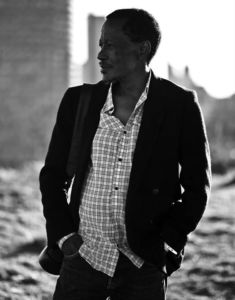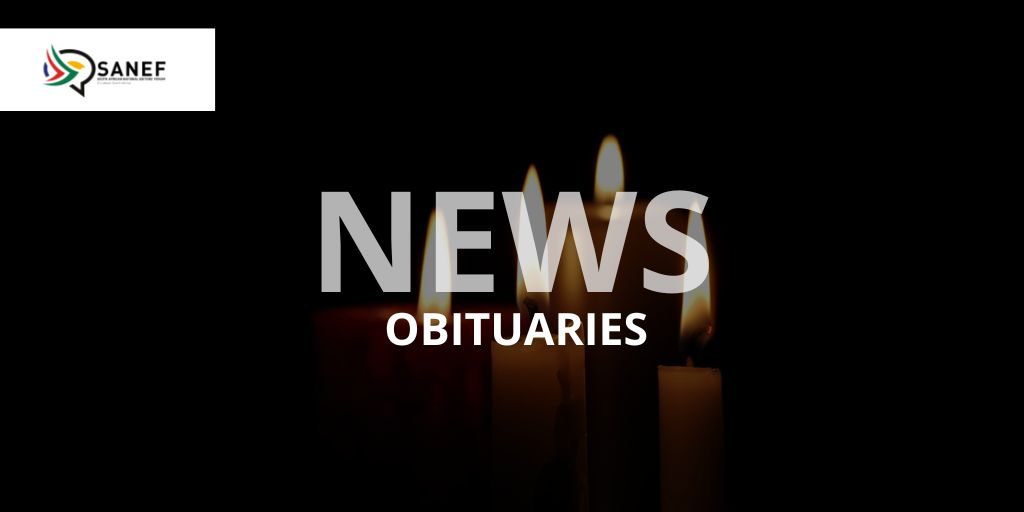SANEF Mourns The Death Of Veteran Photojournalist Santu Mofokeng

The South African National Editors’ Forum (SANEF) mourns the death of the unsung South African hero, photojournalist Santu Mofokeng, who died on Sunday 26 January 2020 at the age of 64 after a long illness.
Born in 1956 in Soweto, Mofokeng was not well-known inside his home country for much of his career but was an internationally acclaimed and talented photographer that was held in high regard mainly in Europe and in the USA.
Veteran photojournalist and former SABC CEO, Jimi Matthews said: “He offered us a different photographic view of South Africa. Different from the famous ‘struggle’ images that emerged in the eighties and onwards.”
“He was less interested in the ‘Bang Bang’ genre of photography that depicted the horror of South Africa. His was a more humanistic view of life, a person subjected to the indignities of living under apartheid,” Matthews said.
Mofokeng did solo exhibitions in various galleries in South Africa and around the world including the Market Gallery in Johannesburg, the Netherlands Photo Institute in Rotterdam; the FNAC Montparnasse in Paris, France; the Transparency International Institute in Berlin, Germany; the Memling Museum, Bruges in Belgium; as well as David Krut Projects in New York City.
Matthews said Mofokeng’s haunting images, that he captured when he visited Auschwitz, were consistent with his South African photos.
“The railway line, fading into the mist, very reminiscent of his Train Church series. A Silent Solitude depicting a few trees (without leaves) on the bank of a lake into which the ashes of the cremated were dumped, reminding one of the desolate images he often produced when photographing the South African landscape – trees being a recurring object in many of those images,” Matthews said.
In 2011, the Jeu de Paume in Paris mounted his mid-career project that went on to travel to the Kunsthalle Bern in Switzerland; the Bergen Kunsthall in Norway; the Extra City Kunsthal in Antwerp; and the Wits Art Museum in Johannesburg.
Matthews lamented that the rich body of work that Mofokeng has left behind will always bear testament to the enormous talent that he possessed.
“We were blessed that he shared his humane vision of the world around him with us. May his soul rest in eternal peace,” he said.
Mofokeng was a multi-award-winning photographer and won many fellowships. The list below speaks volumes of the level of recognition and respect he earned in his lifetime:
- 1991: Ernest Cole Scholarship, for study at the International Center of Photography, in New York City
- 1992: 1st Mother Jones Award for Africa
- 1998: Künstlerhaus Worpswede Fellowship, Germany
- 1999: Contre Jour Residency, Marseille
- 1999: DAAD Fellowship, Worpswede, Germany
- 2001: DAAD Fellowship, Worpswede, Germany
- 2007: Ruth First Fellowship
- 2009: Prince Claus Award, Netherlands
- 2016: International Photography Prize, Fondazione Fotografia Modena – Sky Arte, Italy.
SANEF sends its condolences to the family and friends of Mr Mofokeng. He will be sorely missed.
Note for Editors: SANEF is a non-profit organisation whose members are editors, senior journalists and journalism trainers from all areas of the South African media. We are committed to championing South Africa’s hard-won freedom of expression and promoting quality, ethics and diversity in the South African media. We promote excellence in journalism through fighting for media freedom, writing policy submissions, research, education and training programmes.
For more information contact:
Hopewell Radebe – SANEF Acting Gauteng Regional Convenor 083 582 1734
Kate Skinner – SANEF Executive Director – 082 926 6404
Chasing Shadows, A Tribute to Santu Mofokeng
By Jimi Matthews
The news of Santu Mofokeng’s passing, which was not surprising, seeing that he had been ill for a long while, still came as a shock.
I remember how worn out he looked the last time I saw him. He brusquely brushed aside my enquiry about his health. And for me, that is how Santu was. Pretty much like his photographs. You had to look beyond the surface to find the true meaning.
He offered us a different photographic view of South Africa. Different from the popular “struggle” images that emerged in the eighties and onwards. He was less interested in the “Bang Bang” genre of photography that depicted the horror of South Africa. His was a more humanistic view of life, a person subjected to the indignities of living under apartheid.
I was often intrigued by his vision. Amongst his vast catalogue, there are a few photographs that moved me. The horse in the forest springs to mind. An emaciated white horse grazing in the mist. Santu’s ability to merge the spiritual with reality profoundly captured in that image. Every time I look at that picture I imagined different scenarios. Where did the horse come from and what was lurking in those trees? It is difficult to look at that picture simply as a portrait of a horse.
The haunting images he captured when he visited Auschwitz are consistent with his South African photos. The railway line, fading into the mist, very reminiscent of his Train Church series. A Silent Solitude depicting a few trees (without leaves) on the bank of a lake into which the ashes of the cremated were dumped reminding one of the desolate images he often produced when photographing the South African landscape – trees being a recurring object in many of those images.
In his desolate South African landscapes of raw stones and emaciated trees, in wide empty spaces, one is forced to look, and look again, to find meaning in what the photographer was trying to convey. And when he photographed people, even in close up, there is still that distance that leaves the viewer wondering, who they are and what are they thinking. For Santu, the individual mattered. They were not just actors on the South African stage but real people, with emotions and maybe with unrealized dreams. And at the same time, even when he deliberately places the human subject in the distance of a full-frame, he manages to capture the intimacy, such as he does with his images of mourners walking towards a burial site in the wide-open veld, a bus following the hearse, and simultaneously the man, closest to the camera, seems to suggest an urgency to join the procession.
Another all-time favourite of mine is the iconic OMO billboard in the township – the irony of a washing powder promising the cleanest wash, in the most polluted air of Johannesburg.
And so Santu Mofokeng is no longer with us. The rich body of work that he left behind will always bear testament to the enormous talent that he possessed. We were blessed that he shared his humane vision of the world around him with us. May his soul rest in eternal peace.



